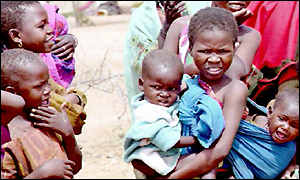
Four people were killed in Sudan at a dam construction site when police fired on them. The incident broke out when members of the minority Nubian community clashed with police to stop any further actions at dam construction on the River Nile.
The proposed dam project has escalated into bloody conflict between Sudanese government and ethnic minority Nubians who fear that the construction of the dam would mean loss of all that is left of their ancient homeland. And who can forget the Aswan dam construction in the 1960s that submerged dozens of Nubian villages forcing the people to flee their homelands. The resettlement of those displaced villagers is still a nagging issue in the country. Few of those who have been relocated are feeling the heat in their new settlements in Sudan’s eastern desert.
A group of peaceful protesters from 26 Nubian villages were demonstrating when the Sudan’s paramilitary Central Reserve Forces open fired and used teargas to disperse the agitation. The firing left 4 dead and 19 injured. When the news of the police firing killing their community members spread, thousands of Nubians thronged the roads of the Sudanese capital, Khartoum to protest against the killing of their brethren. Police used teargas to scatter the demonstrators.
Government officials said that police fired in self-defense after teargas failed to disperse the crowd.
Ever since the construction of the dam was proposed, the country has witnessed intense local opposition, despite this, Sudan’s Government is inching forward with preliminary work on the project, known as the Kijbar. For the Kijbar protestors, memories of construction of Nile’s Aswan High Dam in neighboring Egypt are evergreen. In Sudan, Wadi Halfa, the main Nubian city, was submerged by the new Aswan reservoir, which the Sudanese call Lake Nubia and for Egyptians, it is Lake Nasser. The devastated lives of the Nubians are a reminder of the fact that the community a river people, are left to face the dreary desert. They were born to live and die in the riverine area. How can inhabitants of rivers face the dry deserts?
Elsewhere, the story is the same. Hundreds of miles to the south of Khartoum, members of a river tribe have refused to make way for the Chinese-built hydroelectric Merowe Dam in Halfa, which is scheduled to start operating in late 2008.
Construction of huge dams and submergence of nearby areas has made news in other countries as well. India’s Narmada Bachao Andolan, and Almatti dam are only few of such examples, where people have opposed building of reservoirs for the fear of submergence and displacement.
Moreover, resettlement of the displaced people becomes a big issue once the construction begins. The inhabitants of rivers need to be resettled and relocated to areas identical to their natural habitats. River people cannot be expected to survive in desert areas. Therefore, government in every country must make sure that while continuing with the development efforts, the will of the inhabitants is not killed or submerged under the dams.
Via: National Geographic

